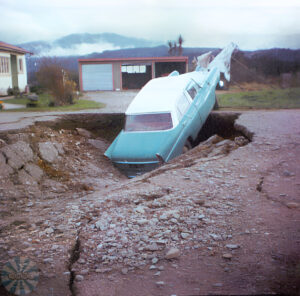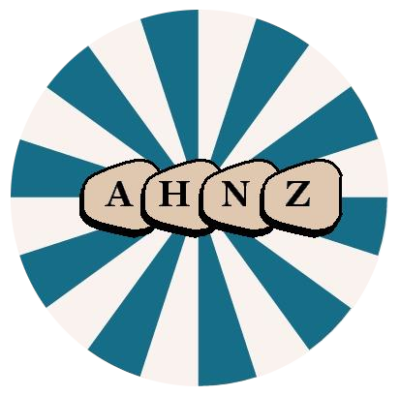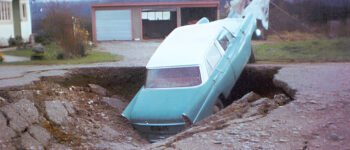1968: Inangahua Earthquake
May 24, 2025
By AHNZ
 Most of New Zealand felt the earthquake (7.1) that struck the settlement of Inangahua today in history, Friday May 24, 1968, at 5.24am.
Most of New Zealand felt the earthquake (7.1) that struck the settlement of Inangahua today in history, Friday May 24, 1968, at 5.24am.
There was an enormous landslide halfway down the upper Buller Gorge large enough to block the Boller River on day 1. Recognising that the river level had dropped away, the population steeled itself for an enormous tidal wave should the dam burst all at once. Fortunately, the river cut a peaceful path through the obstruction overnight without any such major effect. Ref. National Radio (1993,) NZ Sound and Vision
Inangahua’s heyday was in the past when the town was the way in and out of the great metropolis of Reefton. It existed now to supply a bit of coal and timber and scenery to visiting tourists. Some of the population lived in houses so run down that the earthquake was probably an improvement. The parliamentary opposition admitted as much when Norman Kirk and Bill Rowling pointed out that “the conditions of some of the houses in the town could be described as “derelict,” but they were being lived in.” Ref. Press (1968,) Papers Past
The Inangahua Earthquake Disaster Fund exceeded $14,000 according to the Press. Keith Holyoake’s National 2.0 Ministry would have been happy to launder some money through the crisis but what could Finance Minister Rob Muldoon spend it on? The least they could do was direct some to their friends in the roading industry. And so it was that “The earthquake was in a way a blessing in disguise, as although the road in the Gorge had been done up, the resulting new road built after the earthquake as we have today was far superior.” Ref. McIntyre (2018)
I suspect the greatest damage, like Christchurch in the 2010s, was done after the quake by humans trying to “fix” the problems. Being piled upon with money and gifts creates a false economy and this stimulus package in the name of the earthquake must have dwarfed the money Inangahua’s people were earning through honest work. Many of the old identities never returned to the re-creation of Inangahua patched together by The State.
It seems, too, that there was so much free money flying around that Thomas Moore, the Inangahua Country Clerk, couldn’t find enough legal places to stuff it. So, he stuffed several thousand dollars into himself and ended up being charged and sentenced to a year in jail. Ref. Press (1970,) Papers Past
Inangahua had a chance to bind together and rebuild their community and in doing so become stronger. Instead, they were evacuated and the restoration work performed by outsiders. According to the Britton thesis the people did not return until August of 1968. Holyoake’s government set up a inter-departmental committee to run the place. Even farmers were helicoptered in and out of their farms to do the feeding. So, I guess Muldoon accumulated some political capital in the world of aviation for that!
In the early times, when the quake was in the headlines, Holyoake’s cabinet seemed to be liberal with the cash. However, as public interest died down the mopping up job was left to local authority and bureaucrats. Inangahua Junction itself, with its almost 100 years history from the days when river travel was the way to travel, was given a death sentence by The State. When those residents, 40 of them, 16.6% of the population, returned home they were advised the Junction was “unsafe” now. Their homes had been moved to ‘the camp’ (ie Inangahua) or demolished. Their Post Office, Hotel, Store, and Tearooms were gone for good. And perhaps that was the right call but it would have made a huge difference to community pride and self-help if they rather than outsiders had been responsible for making that decision. Such is life in a First Turning time period.
In my opinion a crisis isn’t really a crisis compared to the way politicians never fail to let one go to waste. An earthquake, flood, or a pandemic is a picnic by comparison to the unnatural disaster and damage government does in the name of “helping.” They kill with “kindness.” The quake didn’t necessarily all but wipe Inangahua off the map but the government did so quite literally. The only people who really knew and cared for their home range were exiled while the important decisions were made. Or, the lack of important decisions. Because, instead of taking an active role in what was to become of their territory the people of the Buller were led to assume it was all being done for them and in good hands. It wasn’t.
Besides which, Holyoake and Muldoon would have had no political interest in rebuilding what was, after all, a labour stronghold. This was Paddy Blanchfield’s electorate and has always run red almost without exception. Only in 2023 did Damien O’Connor exit this seat after 30 years, the most recent in a very long list of Labour MPs and Lefties.
Although I’ve been to Inangahua many times and even stopped I’ve never exited the car. I think they might have something to see at their hall/museum but it looks cold, pealing, uninviting, un-open. A larger version of one of those old broken fridges that has been made into a ‘library’ of musting old reject books (and they have one of those too.) Next time I’ll make an effort even if I don’t think it will amount to much and I’ll look conspicuous to any residents for doing something so unusual as not driving immediately out the other side of their place like everyone else.
It feels like there isn’t any spirit here. The old homes seem shamed as elderly antiques by the grey inhuman power substation staring down on them from the main bend in the road. They had a One Stop Shop as a dairy and Post Office (1989-2010) but that’s long gone. “An empire toppled by its enemies can rise again, but one which crumbles from within, is dead forever.” I think this applies to a community as well. Things could have been different if the folk of Inangahua, between May and August of 1968, had stuck to their land or at least to each other for crucial time after the quake.
—
Image ref. Brian McIntyre, West Coast Recollect (2018,) AHNZ Enhanced (2025)
Ref. Brian McIntyre, West Coast Recollect (2018)
 Like Comment Share
Like Comment Share





